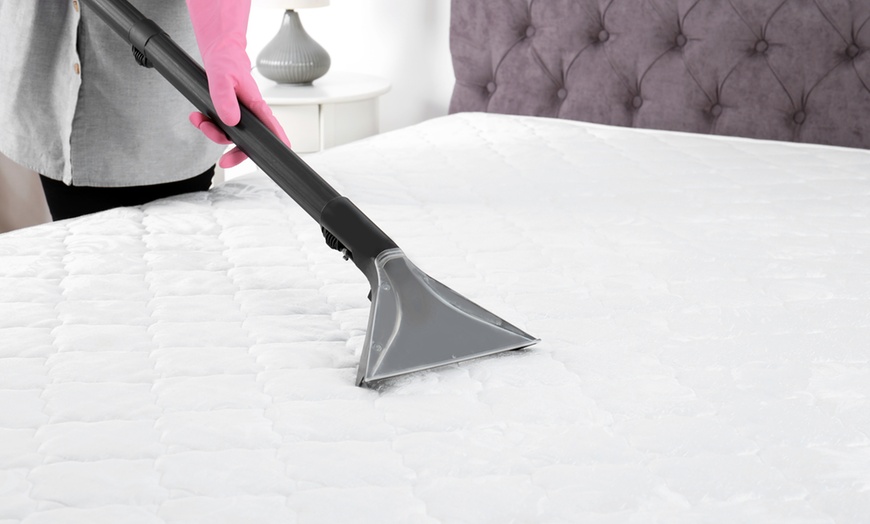The bed is the focal point of your bedroom, and its blanketed surface is one of the most important places in your home. It’s also one of the hardest to keep clean: Between spills, dust, and stains, it’s no surprise that many people with fabric beds have a bit of trouble keeping their bedding looking pristine. Luckily for you, we’ve compiled some tips on how to clean fabric beds without causing damage or impairment!
Dust ruffles are usually made of fabric, and can be washed in a washing machine. However, they are often attached to the bed with buttons or snaps and can be removed fairly easily by taking out these fasteners before putting your bedding into the wash. If you don’t want to remove or change your dust ruffle, then just skip this step! It’s up to you!
Before you begin, remove any loose pillows and decorations from your bed. Be sure to clean the dust ruffle if it has one, as well as the headboard and footboard. Finally, remove your mattress pad (if you have one) and lay it out flat in an area that won’t be affect by cleaning solutions.

Vacuuming is an important part of the cleaning process, and should not be skipp. You’ll need a crevice attachment to do this properly. If you have an upright vacuum cleaner, use it on its lowest setting to avoid damaging your bed frame or mattress.
For best results, first vacuum in one direction (either up or down) and then repeat in the opposite direction. This will ensure that all dust has been remove from both sides of your mattress.
Vacuum your mattress with an upholstery attachment. This will remove dirt from the sides and top of your mattress, which can be hard to reach with a hand vacuum. The key here is to use the highest settings on your vacuum so that you don’t damage your bed while removing dirt and dust particles.
You should vacuum your mattress regularly, but it depends on how often you sleep in it. If you have pets or kids who spend lots of time jumping on it and rolling around, then you’ll probably want to clean it more often than if no one ever gets near it except yourself at bedtime.
Clean Fabric Beds Stains On The Headboard Or Footboard
The headboard and footboard are often made of a material other than fabric, such as wood or metal. The best way to clean these surfaces is to dab at the stain with a dry cloth to soak up excess liquid and then treat it with a mild detergent. Rinse with warm water, wipe dry with a clean cloth and let it air dry before placing your bedding back on the bed.
It is important to blot the spilled polish or perfume immediately with a dry cloth. Do not rub it, as this will only cause the stain to spread and become more difficult to clean. If you have any water rings left from your cleaning process.
You can use a hairdryer on low heat to help dry up the water. To avoid getting alcohol on your fabric bedding, simply try using a dry cloth instead of alcohol when blotting up spills.
Now that your mattress is clean and dry, it’s time to get some clean bedding.
Your new bedding can be anything from the same brand of sheet set you were using before to a totally different color or style of sheets, blankets and pillowcases. The important thing is that you are using clean products that are made for washing machine use.
The easiest way to keep up with this is just wash all your linens on a regular basis—every week should be good enough! There are many options available in terms of what type of detergent to use depending on whether you have hard water or soft water. How much time/money (and energy) you want to spend on laundry day.
A good rule of thumb is not overdoing it with harsh chemicals—all they do is strip away natural oils in the fabric which will cause even more wrinkling over time!
Staying away from harsh chemicals means no bleach either! This will not only cause damage but also leave behind an unpleasant odor when wash repeatedly throughout its life cycle; so think twice before adding bleach into the mix since there are plenty of other things out there designed specifically for stain removal without damaging fabrics as much as bleach does.”
Now that you’ve cleaned the bed, it’s time to get some clean sheets! There are many options when it comes to bedding. You can always buy new sheets from a department store or linen store. But if your budget doesn’t allow for that option, there are other ways. For example, if you have an old quilt or comforter that needs replacing anyway now might be a better time than later! Another option is to find some cheap used sheets at thrift stores like Goodwill or Salvation Army – these will be just as good as new ones anyways!
We hope that this article was helpful in letting you clean fabric beds with ease. In case of any query, contact us.
Read More: How To Find The Best Mattress For Your Growing Child